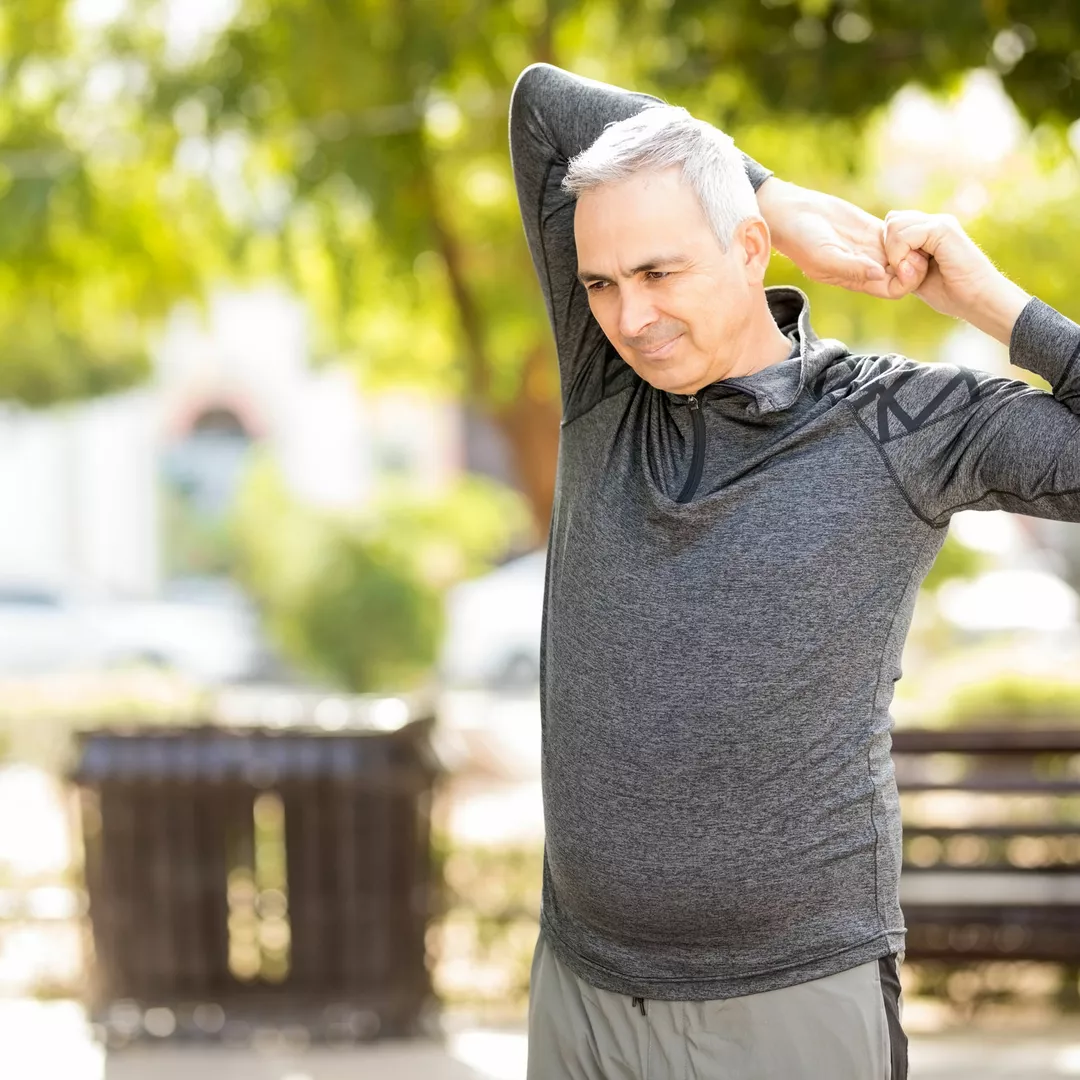Maintaining your fitness for a strong and healthy body, regardless of age, is good for your heart and overall health. But as you get older, you may notice a creeping middle-age spread. Why does this happen, and what can you do about it?
As we age, our metabolic rates (think the internal furnace that burns all the food we eat and maintains our body composition) start to slow and dwindle. This is because, with age, we start to lose some of the muscle mass that we have on our bodies, and we also tend to move less.
Muscles on our body mean that we burn more energy while we are sitting still. They are in fact the main driver of our metabolism – our internal furnace. So, as we age, if we do not continue to do some form of resistance exercise or weight training to preserve, or better yet, grow more muscle, then over the course of two or three decades, our metabolisms slow significantly. Put simply, we lose muscle as we age and gain weight.
People often also just move less as they get older. By moving less each day, we burn less energy. This, coupled with our slowing metabolic rate due to lost muscle mass, means that the middle-age spread can soon take over.
How often should we move?
Experts recommend that people aged 18–64 years should:1
- Be active on most, preferably all, days every week.
- Accumulate 150 to 300 minutes (2½ to 5 hours) of moderate intensity physical activity or 75 to 150 minutes (1¼ to 2½ hours) of vigorous intensity physical activity, or an equivalent combination of both moderate and vigorous activities, each week.
Do muscle strengthening activities on at least 2 days each week. People over the age of 65 should:1
- Be active every day in as many ways as possible, doing a range of physical activities that incorporate fitness, strength, balance and flexibility.
- Accumulate at least 30 minutes of moderate intensity physical activity on most, preferably all, days.
- Start any new physical activity at a level that is easily manageable and gradually build up the recommended amount, type and frequency of activity.
Consistency is key for fitness
Something to keep in mind is that strength and the aerobic adaptation and qualities that you gain from exercising every day are fleeting. This doesn’t mean that we lose everything we have gained by not training for a week or two, but we do know that these gains aren’t permanent, and that the only way to keep these benefits is by exercising most, if not all, days.
Tips for maintaining fitness at any age
- Start out easy. People get overwhelmed by exercise because they try to do too much too soon. The 10 per cent rule is a great one to use to build up your exercise. For example, if you start with a 20-minute brisk walk, add 10 per cent to the time you spend walking every week. In a few weeks, you would have built up to an hour of walking.
- Exercise every day, and mix it up. For example, do easy exercises on some days and hard on others.
- Find something you love doing. Exercising doesn’t have to be in the gym. You could go hiking, kickboxing, rock climbing or even dancing. If you love it, you will do it!
- Find a community of people to exercise with. Having a group of people with the same goals as you can act as wonderful motivation on the days you might want to skip a session.
- Make a weight-bearing exercise part of your regimen. These are exercises done while on your feet so you bear your own weight, such as brisk walking, jogging, tennis, dancing, aerobics and stair walking, and are important for improving bones strength.
Adapted from original article provided by Nicholas Chartres, Personal Trainer (Master of Nutrition).
References
Australian Department of Health; Australia's Physical Activity and Sedentary Behaviour Guidelines and the Australian 24-Hour Movement Guidelines. www1.health.gov.au/internet/main/publishing.nsf/Content/health-pubhlth-strateg-phys-act-guidelines

